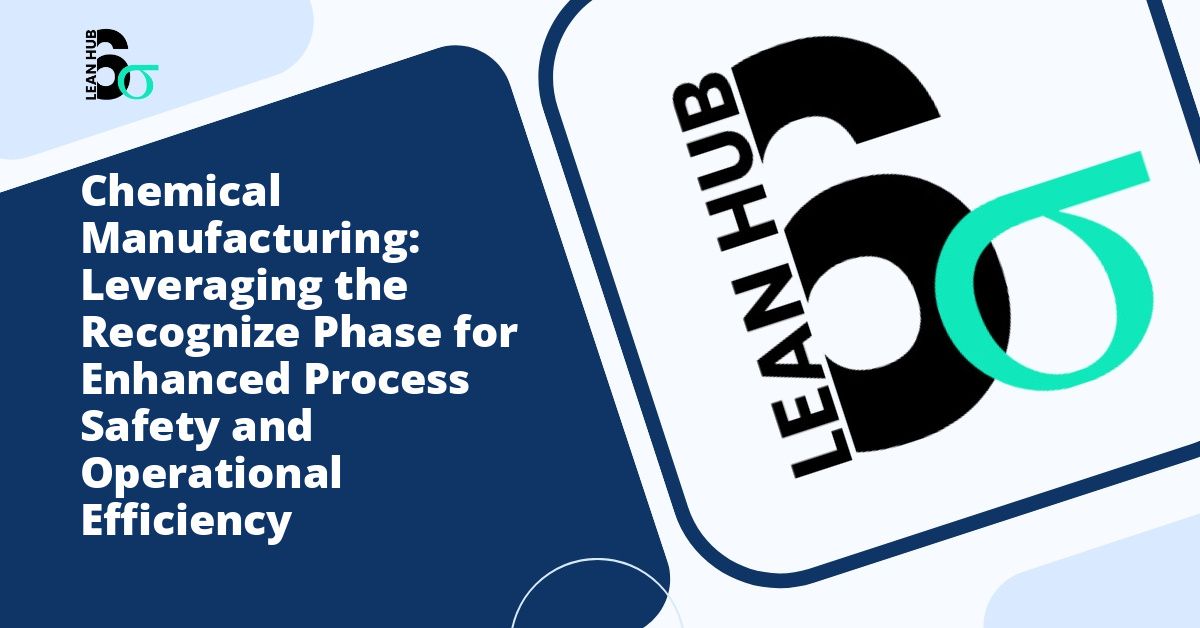In today’s competitive manufacturing landscape, the ability to identify and eliminate defects before they escalate into costly problems represents a critical competitive advantage. The foundation of any successful quality improvement initiative begins with proper recognition of issues, a concept deeply embedded in modern process improvement methodologies. Understanding how to effectively implement the recognize phase can transform manufacturing operations and significantly reduce defect rates across production lines.
Understanding the Recognize Phase in Quality Management
The recognize phase serves as the essential first step in identifying problems within manufacturing processes. This phase involves systematic observation, data collection, and analysis to pinpoint where defects originate and why they occur. Without proper recognition of issues, manufacturers often find themselves addressing symptoms rather than root causes, leading to recurring problems and wasted resources. You might also enjoy reading about How to Get Buy-In for Your Six Sigma Project During the Recognize Phase.
Within the framework of lean six sigma methodology, the recognize phase aligns closely with the Define phase of the DMAIC (Define, Measure, Analyze, Improve, Control) cycle. This alignment emphasizes the importance of clearly understanding what constitutes a defect, where it occurs, and its impact on overall production quality. The recognize phase establishes the baseline understanding necessary for all subsequent improvement efforts. You might also enjoy reading about Cross-Functional Collaboration in Problem Recognition: Best Practices for Success.
The Critical Importance of Early Detection
Manufacturing defects that go unrecognized in early stages multiply in cost as products move through the production process. A component defect identified during initial assembly might cost pennies to correct, while the same defect discovered after final assembly could cost hundreds or thousands of dollars. This exponential cost increase, often referred to as the “rule of ten,” underscores why the recognize phase deserves substantial attention and resources. You might also enjoy reading about RDMAIC vs DMAIC: Why the Recognize Phase Matters in Lean Six Sigma.
Early recognition also prevents defective products from reaching customers, protecting brand reputation and avoiding costly recalls. In industries like automotive, aerospace, and medical device manufacturing, unrecognized defects can result in safety hazards, legal liability, and irreparable damage to company credibility.
Key Components of an Effective Recognize Phase
Establishing Clear Quality Standards
The recognize phase begins with establishing clear, measurable quality standards. These standards must be specific, documented, and communicated throughout the organization. Ambiguous quality criteria make it impossible for workers and inspectors to consistently identify defects. Standards should address dimensional specifications, material properties, appearance characteristics, and functional requirements.
Implementing Systematic Observation Methods
Effective defect recognition requires structured observation methods rather than casual inspection. This includes scheduled quality checks at critical control points, standardized inspection procedures, and properly trained personnel who understand what to look for. Visual management tools such as reference samples, comparison charts, and color-coded indicators help workers quickly identify deviations from standards.
Leveraging Technology and Automation
Modern manufacturing increasingly employs technology to enhance defect recognition capabilities. Vision systems, sensors, and automated inspection equipment can detect defects that human inspectors might miss due to fatigue, distraction, or limitations of human perception. These technologies provide consistent, objective assessments and generate valuable data for analysis.
Creating a Culture of Quality Awareness
Technology and procedures alone cannot guarantee effective defect recognition. Manufacturing organizations must cultivate a culture where every employee feels responsible for quality and empowered to identify problems. This cultural shift requires leadership commitment, appropriate training, and systems that encourage rather than punish problem reporting.
Applying Lean Six Sigma Principles to the Recognize Phase
The lean six sigma methodology provides powerful tools for strengthening the recognize phase. By combining lean manufacturing’s focus on waste elimination with six sigma’s statistical rigor, organizations can develop highly effective defect recognition systems.
Voice of the Customer Analysis
Understanding customer requirements and expectations forms the foundation for recognizing what constitutes a defect. Lean six sigma emphasizes capturing the voice of the customer to ensure that quality standards align with actual customer needs rather than internal assumptions. This customer focus helps prioritize which defects require immediate attention based on their impact on customer satisfaction.
Value Stream Mapping
Value stream mapping, a core lean tool, helps visualize entire production processes and identify where defects most commonly occur. This holistic view reveals patterns and connections that might not be apparent when examining individual process steps in isolation. By mapping the flow of materials and information, manufacturers can strategically position recognition activities at points of highest risk.
Statistical Process Control
Six sigma’s emphasis on statistical methods brings rigor to the recognize phase. Control charts, capability studies, and other statistical tools help distinguish between normal process variation and true defects requiring intervention. This statistical foundation prevents overreaction to random variation while ensuring genuine problems receive appropriate attention.
Practical Steps for Implementing the Recognize Phase
Step 1: Define What Constitutes a Defect
Begin by creating clear definitions for all defect categories relevant to your products. These definitions should include visual references, measurement criteria, and severity classifications. Ensure that everyone involved in production and quality control shares a common understanding of these definitions.
Step 2: Map Critical Control Points
Identify the stages in your manufacturing process where defects are most likely to occur or where detection provides the greatest value. These critical control points become focal areas for recognition activities. Consider factors such as process complexity, historical defect data, and downstream impact when selecting control points.
Step 3: Develop Standardized Inspection Procedures
Create detailed procedures for how inspections should be conducted at each control point. Include information about inspection frequency, sampling methods, measurement techniques, and documentation requirements. Standardization ensures consistency regardless of who performs the inspection.
Step 4: Train Personnel Thoroughly
Invest in comprehensive training programs that teach personnel how to recognize defects according to established standards. Training should include hands-on practice with real examples, regular refresher sessions, and verification of competency. Well-trained employees serve as the first line of defense against defects.
Step 5: Implement Feedback Mechanisms
Establish systems for capturing and communicating information about recognized defects. This feedback loop enables continuous improvement by revealing trends, identifying systemic issues, and measuring the effectiveness of corrective actions. Digital tools and dashboards can make this information readily accessible to decision-makers.
Measuring Success in the Recognize Phase
Effective implementation of the recognize phase should produce measurable improvements in quality metrics. Key performance indicators might include defect detection rates, cost of quality, customer complaints, and scrap or rework expenses. Organizations should track these metrics over time to assess whether recognition capabilities are improving and delivering business value.
The percentage of defects caught internally versus those discovered by customers serves as a particularly telling metric. As the recognize phase becomes more effective, this ratio should shift favorably, with more defects identified and corrected before shipment.
Common Challenges and Solutions
Many organizations struggle with the recognize phase due to insufficient resources, inadequate training, or cultural resistance. Overcoming these challenges requires sustained management commitment and willingness to invest in quality infrastructure. Starting with pilot programs in high-impact areas can demonstrate value and build momentum for broader implementation.
Another common challenge involves balancing the thoroughness of defect recognition with production efficiency. Overly burdensome inspection procedures can create bottlenecks, while insufficient inspection allows defects to escape detection. Lean six sigma principles help find the optimal balance by focusing recognition efforts where they deliver the greatest impact.
Conclusion
The recognize phase represents the critical foundation for manufacturing excellence and defect reduction. By systematically identifying quality issues early in the production process, manufacturers can prevent costly downstream problems, protect brand reputation, and improve customer satisfaction. Implementing this phase effectively requires clear standards, appropriate tools and technology, well-trained personnel, and a culture that values quality above all else.
Organizations that excel in the recognize phase position themselves for sustained competitive advantage. They catch problems before they escalate, continuously learn from quality data, and build processes that become increasingly robust over time. Whether operating within a formal lean six sigma framework or developing customized approaches, manufacturers must prioritize defect recognition as an essential element of operational excellence. The investment in strong recognition capabilities pays dividends through reduced waste, improved efficiency, and the confidence that comes from truly understanding and controlling production quality.








